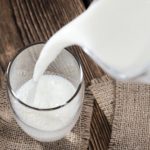
USDA’s Economic Research Service (ERS) reported last year that as of 2019, fluid beverage milk accounted for 21.7% of total skim-solids production (when the butterfat is skimmed from the milk). That’s down from 33.6% in 2000 when evaluating beverage milk consumption after the butterfat is skimmed from milk delivered to the plant.
Likewise, the percent of milkfat production . . . including all butterfat delivered to processing plants . . . consumed as fluid beverage milk fell from 18% to just 11.3% between 2000 and 2019. Updated data incorporating 2020 will be released later this month.
Lost youth become lost adults
A new ERS publication analyzes data from National Health and Nutrition Examination Surveys to consider the effect of age differences, method of consumption, and other detailed factors on fluid consumption. One of the findings of the study should remind all dairy industry participants of the importance of reaching consumers before life-long habits are formed: “Younger generations who grew up drinking less milk as children appear to consume less at all ages”.
The study also found that fluid consumption declined at an increasing rate in the 2010s relative to previous decades. The fall of 20.2% in the 2010s was nearly twice as rapid as the percentage decline in any other decade since the downtrend began in the mid-1940s. This decline has contributed to the fact that 90% of U.S. residents do not meet the federal dietary recommendations for dairy product consumption.
Complementary foods also account for lagging sales
The study also considered the proportion of fluid cow’s milk consumption consumed in other beverages, consumed with cereal, or consumed in milk and milk drinks. While still accounting for just about 12% of the total in most recent data, the amount of milk consumed in other beverages has grown slightly in the past 15 years. Milk consumed with cereal fell about one-fourth from 2003 to 2018, and now comprises 30% of the total. Meanwhile, milk and milk drinks consumption fell by 42%.
Survey data also broke down the consumption of milk and milk drinks by age group. Children 12 years and younger consumed an average of 0.79 cup-equivalents per day according to the 2017-18 survey data, down 26% from the 2003-04 reading. Consumption by teenagers declined by 49% over the period to 0.40 cup-equivalents per day, while the decline for adults was 47% to 0.23 cup-equivalents.
This ERS report provides additional clarity to declining fluid milk consumption and must be considered by the dairy industry as it works to increase the consumption of milk and milk products. Stronger demand for milk and milk products will always lead to a more vibrant dairy industry.
BY SCOTT BROWN, UNIVERSITY OF MISSOURI























